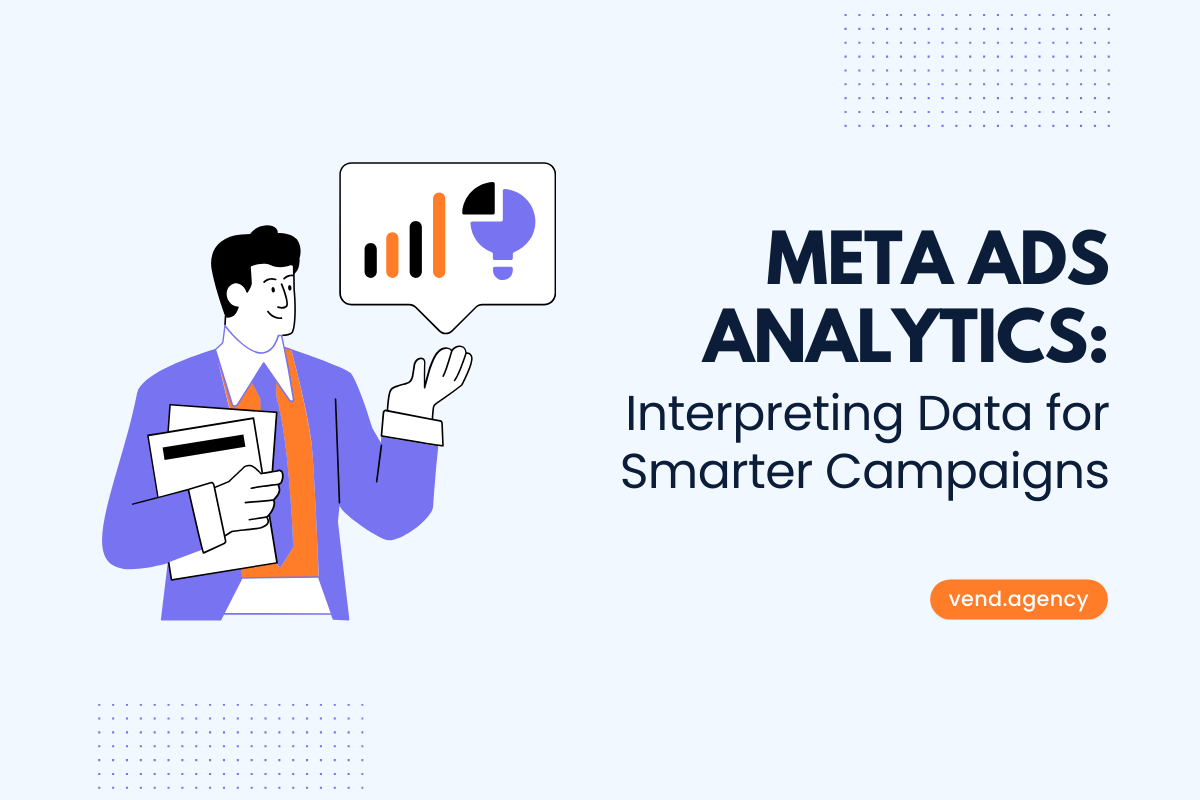
Meta Ads Analytics: Interpreting Data for Smarter Campaigns
Data is king. Understanding and effectively utilizing Meta Ads Analytics is crucial if you want to optimize your campaigns. Meta Ads, encompassing Facebook and Instagram advertising, offers a wealth of data, but the real challenge lies in interpreting this data to make smarter, more informed campaign decisions. In this post, we will show you the essential steps of understanding Meta Ads Analytics to enhance your campaign performance.
1. Navigating the Meta Ads Analytics Dashboard
Familiarize yourself with the Meta Ads Analytics dashboard. Key areas to focus on include the overview tab, which gives a snapshot of your campaign performance, and the detailed breakdowns that provide insights into specific metrics.Tailor your analytics view to match your campaign goals. Whether it's tracking conversions, engagement, or reach, ensure you're monitoring the metrics that matter most to your objectives.
2. Key Metrics to Monitor
These include likes, comments, shares, and video views. High engagement rates typically indicate that your content resonates well with your audience. Click-Through Rate (CTR), Cost Per Click (CPC), and Conversion Rate are critical for understanding how effectively your ads drive action. Return on Ad Spend (ROAS): This metric tells you the return generated for every dollar spent. A vital metric for measuring profitability.
3. Audience Insights
Look at the age, gender, location, and other demographic data of the people interacting with your ads. This information can help tailor future campaigns to better target your audience. Understanding how different segments interact with your ads (such as time of day or device used) can help optimize ad delivery for maximum impact.
4. A/B Testing Results
Use Meta Ads Analytics to analyze the results of A/B tests. These insights can guide you on which creative elements, ad placements, and audience segments work best. Based on A/B testing data, make informed adjustments to improve your campaigns' performance continuously.
5. Conversion Tracking
Ensure you have set up conversion tracking to measure the actions users take after clicking on your ads. Understanding the path that leads to conversions can provide insights into the customer journey and which ad elements are most effective in driving sales.
6. Leveraging the Data for Campaign Adjustments
Use the insights gained from Meta Ads Analytics to make strategic decisions. This could involve shifting budget allocations, adjusting target audiences, or tweaking ad creatives. Regularly check your analytics to stay on top of campaign performance. This ongoing monitoring allows for timely adjustments to optimize your campaigns.
7. Reporting and Strategy Development
Develop comprehensive reports based on analytics data to share with your team or clients. Use the trends and patterns identified in your analytics to inform your broader advertising strategy. This can include budget planning, seasonal adjustments, and long-term targeting strategies.
Conclusion
Meta Ads Analytics is a powerful tool that, when used effectively, can significantly enhance the performance of your digital advertising campaigns. You can refine your strategies, better connect with your audience, and achieve a higher ROI on your advertising efforts, if you understand the wealth of data. The key to success lies in not just collecting it, but in interpreting it correctly and making informed adjustments to your campaigns.
A great way to start getting to know your business - just to call. Leave a form, and we will delve into your enterprise challenges and offer the best solutions.
